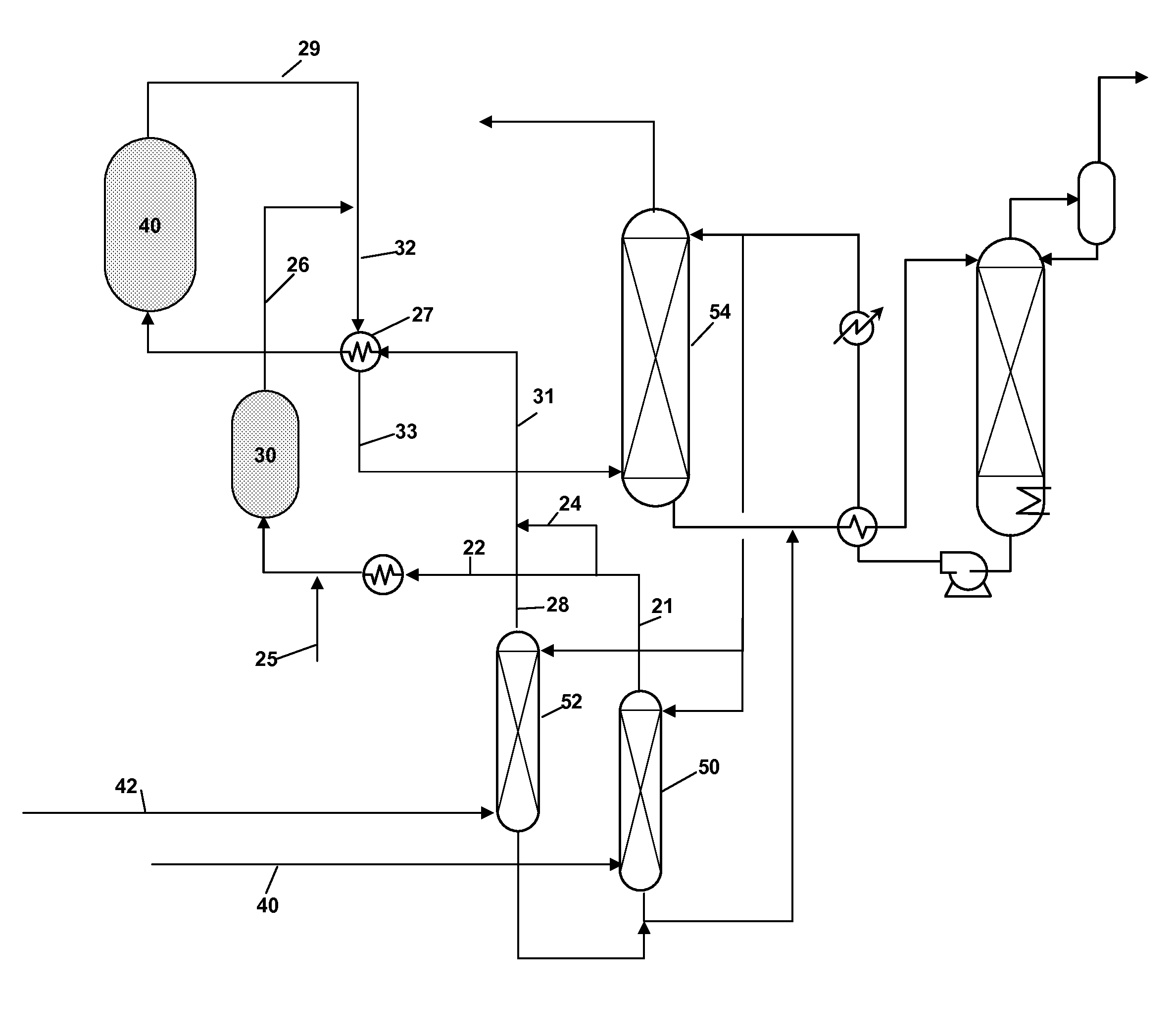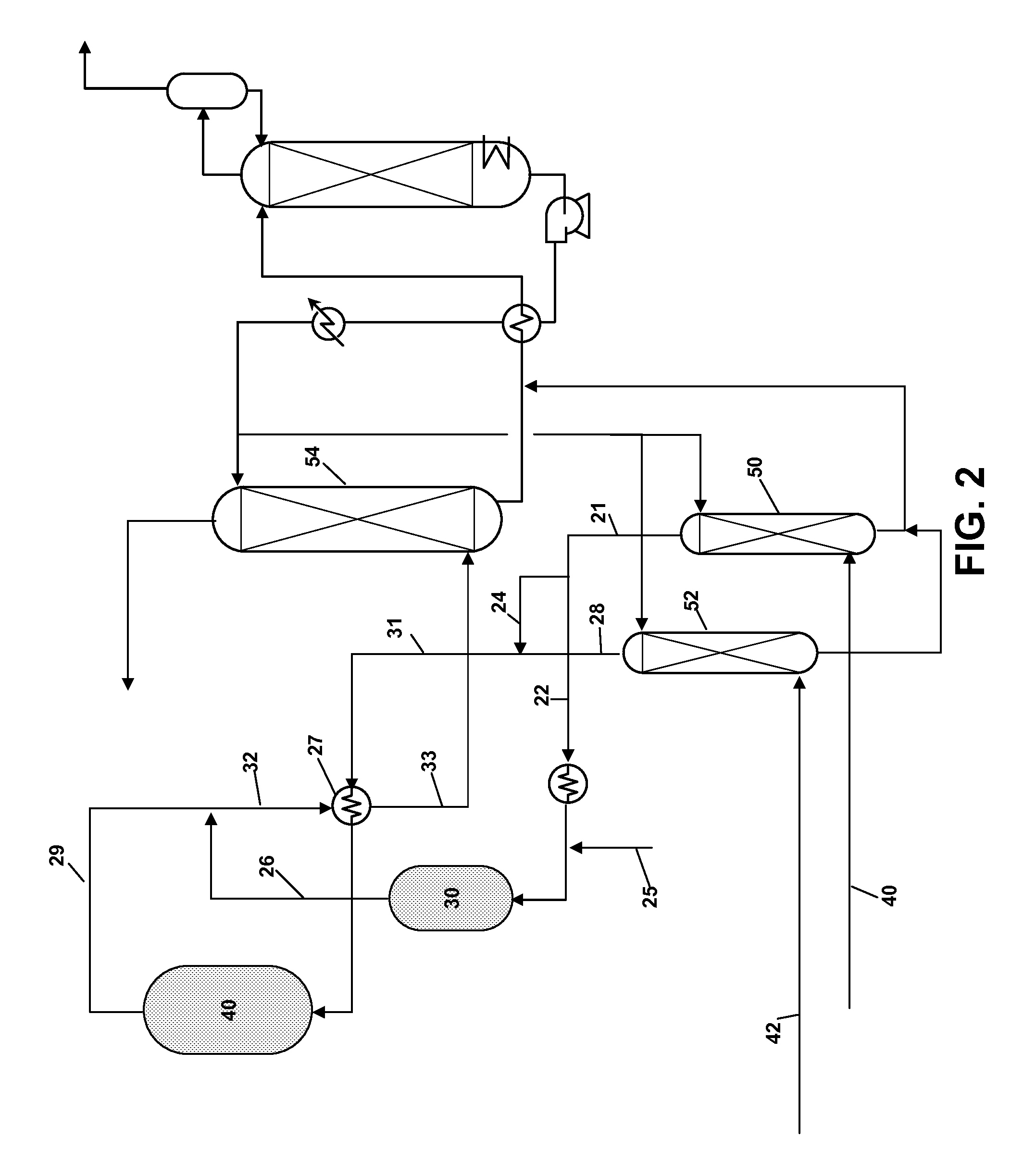Process for sulfur removal from refinery off gas
a technology of sulfur oxide compounds and refineries, applied in the direction of hydrogen separation using liquid contact, gaseous mixture working up, separation processes, etc., can solve the problems of sulfur oxide compounds, toxic or other environmentally undesirable gases, and investment in expensive scrubbing systems, so as to provide flexibility of operation
- Summary
- Abstract
- Description
- Claims
- Application Information
AI Technical Summary
Benefits of technology
Problems solved by technology
Method used
Image
Examples
Embodiment Construction
[0056]The process and system of the present invention is directed to the flexible and effective use of olefin containing ROG streams. ROG streams come from multiple sources such as from fluidized catalytic cracking (FCC) units, hydrocracking units, and delayed coking units and contain varying types and concentrations of sulfur compounds. These sulfur compounds, including various organic sulfur compounds as described below, must be removed prior to either further processing of the ROG stream or the use of the ROG stream as a fuel gas.
[0057]ROG streams coming from various refinery processes can be combined into a single ROG stream or can be segregated between those containing high olefin concentrations and those containing low olefin concentrations. In most refineries, the ROG streams will naturally have high or low olefin concentrations based on their source. The olefin concentration will determine the optimal sulfur removal process and either a single stream or two streams with vary...
PUM
| Property | Measurement | Unit |
|---|---|---|
| temperature | aaaaa | aaaaa |
| temperature | aaaaa | aaaaa |
| molar ratio | aaaaa | aaaaa |
Abstract
Description
Claims
Application Information
 Login to View More
Login to View More - R&D
- Intellectual Property
- Life Sciences
- Materials
- Tech Scout
- Unparalleled Data Quality
- Higher Quality Content
- 60% Fewer Hallucinations
Browse by: Latest US Patents, China's latest patents, Technical Efficacy Thesaurus, Application Domain, Technology Topic, Popular Technical Reports.
© 2025 PatSnap. All rights reserved.Legal|Privacy policy|Modern Slavery Act Transparency Statement|Sitemap|About US| Contact US: help@patsnap.com



